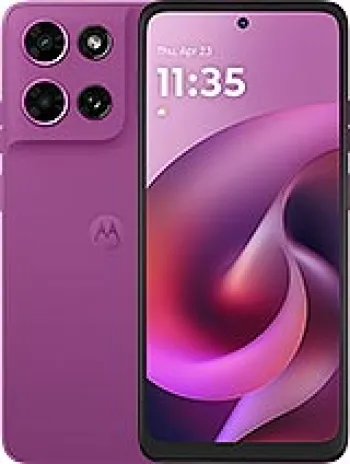
Overview of Motorola E1070
The Motorola E1070, launched in the fourth quarter of 2005, represents a class of feature phones from a pre-smartphone era. At a time when mobile technology was rapidly evolving, this phone offered significant features that were considered advanced. Despite being discontinued, the device is remembered for its elegant design and practical functionalities.
Design and Build
The Motorola E1070 showcases a sleek and durable design. With its dimensions measuring 96 x 50 x 23.5 mm and a weight of 129 grams, it is compact and easy to handle. Its clamshell form factor reflects the design ethos of the mid-2000s, which was centered around practicality and style. The phone accommodates a Mini-SIM card and was available in black and silver colors, offering a touch of sophistication.
Display
The device features a 2.0-inch TFT display capable of showing 256K colors. With a resolution of 240 x 320 pixels and a pixel density of approximately 200 ppi, the screen supports clear and vibrant visuals, suitable for images and basic multimedia. Though the screen-to-body ratio is about 25.8%, it was considered adequate for the phone's functional design.
Camera
For imaging, the Motorola E1070 is equipped with a 1.3 MP primary camera. It includes an LED flash, allowing users to take photos in low-light conditions. The phone also offers video recording capabilities. On the front, there is a VGA camera that facilitates video calls, a feature that was on the forefront of mobile technology at the time.
Performance and Software
While specific details about the processor and RAM are not well-documented, the phone runs on a feature phone operating system. This OS was optimized for basic tasks like messaging, calling, and light web browsing. The E1070 features Java support (MIDP 2.0), enabling users to download and run Java-based applications and games.
Connectivity
The phone provides robust connectivity options for its era. It supports GSM (900/1800/1900) and UMTS (2100) bands, with data speeds reaching up to 384 kbps, which allows users to experience basic internet functions. The device comes equipped with Bluetooth 1.2 with A2DP for wireless file transfers and a miniUSB port for charging and data synchronization. However, the phone lacks Wi-Fi and positioning features.
Memory and Storage
With a dedicated microSD slot, the Motorola E1070 allows expansion of storage, addressing the needs for additional space for files and multimedia. The phonebook memory accommodates an ample number of contacts, and its call logs can store the history of 10 dialed, 10 received, and 10 missed calls.
Sound and Entertainment
The Motorola E1070 supports various sound alert types, including vibration, polyphonic, and MP3 ringtones. While it doesn't feature a loudspeaker or a 3.5mm jack, it offers a personalized experiences with downloadable games and ringtones. The phone also supports messaging via SMS, MMS, Email, and Instant Messaging, enhancing its utility for communication.
Battery Life
Powered by a removable Li-Ion 1130 mAh battery, the device promises a standby time of up to 230 hours and talk time of about 4 hours and 20 minutes. This makes it reliable for daily use without the frequent need for recharging, aligning with the expectations from feature phones during its time.
Conclusion
The Motorola E1070 stands out as a fine representation of the feature phone era, providing a balance of elegance, functionality, and reliable performance. Though technology has vastly moved on, making such devices obsolete, the E1070 offered consumers of its time a satisfying mobile experience. Its combination of design and functionality ensured it held a place in the transitional timeline leading into the smartphone age.
Key Features of Motorola E1070
- Supports GSM and UMTS technology for wider network compatibility.
- 3G UMTS band at 2100 for faster internet browsing with 384 kbps speed.
- Compact design with dimensions of 96 x 50 x 23.5 mm and weight of 129 g.
- Vivid 2.0-inch TFT display with 256K colors and resolution of 240 x 320 pixels.
- Dedicated microSD card slot for expandable storage.
- 1.3 MP main camera with LED flash for basic photography.
- VGA front camera for video calls.
- Supports Bluetooth 1.2 with A2DP for wireless connectivity.
- Comes with miniUSB for charging and data transfer.
- Messaging options include SMS, MMS, Email, and Instant Messaging.
- Removable Li-Ion 1130 mAh battery providing up to 230 hours standby time.
- Available in elegant black and silver colors.
Disadvantages of Motorola E1070
- No loudspeaker available which may affect hands-free operations.
- Lacks a 3.5mm headphone jack, limiting audio output options.
- No WLAN support, restricting wireless internet access.
- No GPS or positioning services available.
- Does not include an FM radio feature.
- Limited internal call records storage (only 10 dialed, 10 received, and 10 missed calls).
- The front-facing camera is only VGA quality, affecting video call resolution.
- Screen size is relatively small with a low screen-to-body ratio (~25.8%).
- The phone is discontinued, which may affect the availability of support and parts.





View Also
More Phones
All Rights Reserved +14266 Phones © Mobilawy 2025

























